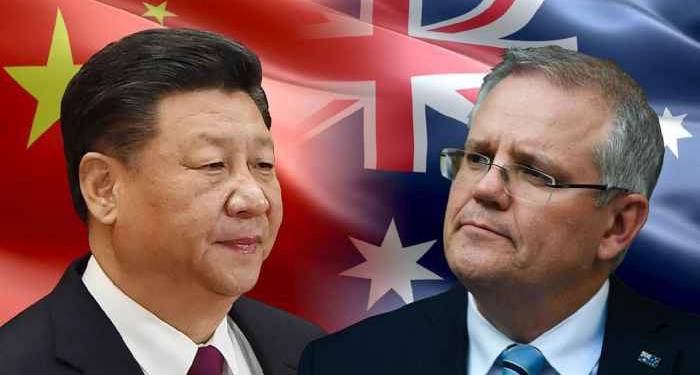The Coronavirus pandemic has been an eye-opener for the down under country of Australia as one of its largest trading partners China has shown its true and vile colors. From slapping 80 percent tariff on barley imports, coal and Iron ores to banning the export of meat, China has done everything possible to hurt the Aussies. But the tide is now changing.
Australia has changed its foreign investment rules which gives greater approval powers to the Foreign Investment Review Board (FIRB) to curtail opportunistic takeovers of struggling businesses amid increasing national security risk.
Under the new plan, FIRB would have to approve all investments in a “sensitive national security business”, regardless of the value of the deal. The sensitive national security business is a direct reference to the Chinese that tried leveraging its might in the Australian market to its own benefit and bend Australia according to its wishes.
Under the new rules, the Treasurer will be able to force a foreign company to sell its stake if a national security risk arises. The new FIRB rules would encompass sectors such as communications, technology, energy, and major infrastructure projects like ports and defense contractors.
No names taken but China on the radar
Speaking on the changes, Australian Prime Minister Scott Morrison said, “The new rules were formulated based on Australia’s national interest.”
Home Affairs Minister Peter Dutton further iterated that the changes were important, given Australia was “seeing more foreign interference than we’ve ever seen before”. When asked if the changes were aimed at Chinese investments, Mr. Dutton chained by his diplomatic restraints said that the new rules would be ‘country agnostic’.
The Genesis
It all started in the aftermath of COVID-19 when Australia started calling out for an international inquiry against Beijing and its alleged role in the spread of Coronavirus.
The Xi Jinping regime tried its best to quash the rebellion of Australia with the aforementioned maneuvers but the Aussie grit as we Indians have repeatedly seen on the cricket field came into play. Instead of mollycoddling China, the Australian government stood its ground, and ultimately countries around the world also steadily started supporting Australia.
In the end, 100 countries signed a draft resolution put forward by the EU that calls for an investigation into the WHO-led response to the pandemic with China at the center.
Kangaroos slamming the door on Chinese face
News has already been coming out that Australia could give a stinging blow to China by scrapping the $107 billion BRI project in the Australian state of Victoria.
China was desperate to get Australia onboard the ambitious Belt and Road Initiative (BRI) but failed to secure the Federal government’s support. For China, the presence in Australia is now limited to its BRI project in the Victoria state of Australia and the Darwin Port in Northern Territory. These projects are of course, incompatible with Prime Minister Scott Morrison’s anti-China stance.
The Chinese investment has already fallen from $8.2bn in 2018 to $3.4bn in 2019 in Australia and the new FIRB rules might spell doom for the Chinese. As for an alternative, Australia has turned its attention towards India.
In a first of its kind, a virtual bilateral summit was organized between the Prime ministers of the two nations on June 4.
One of the biggest breakthroughs of the virtual summit was the inking of the Mutual Logistics Support Agreement (MLSA) that increases military inter-operability by allowing each other’s navies to access military bases for logistical support.
The threat of China is not only imminent in the South China Sea but also in the Indo-pacific region and the cooperation between India and Australia is the only deterrent stopping China from making splashy waves in the region.
India and Australia share a common concern in the domain of defense and maritime cooperation- China. Australia is concerned about the growing Chinese presence in the Pacific, while India is concerned about Beijing’s growing influence and activities in the Indian Ocean Region (IOR).
As for the Barley market in Australia that has been set back by Chinese tariffs, India has already opened up its markets. Barley producers in Australia are planning to export 5,00,000 tonnes of malt barley to the Indian market.
Australia’s strategy is now to use the open market in India to set off the losses that it will be facing due to steep Chinese tariffs.
Barley market insiders in Australia feel that as Indo-Australian ties grow stronger, the volume of Barley exports to India could go up to a million, and at current prices, this would mean a windfall of 180 million dollars to the industry.
A post COVID world will be a different reality altogether and Australia has had just about enough of China’s tantrums. Currently heavily reliant on the Chinese for trade, the Australians have been pushed in the corner. To avoid such scenarios in the future—Australia is looking to diversify its resources.
With the new FIRB rules, Australia is trying to cushion itself from potential despicable Chinese skirmishes. Countries around the world have been tightening their FDI norms to protect themselves from Chinese encroachments and while Australia battles China out in the middle, it is a solid strategic move to address the legislative chinks in the armor.


































